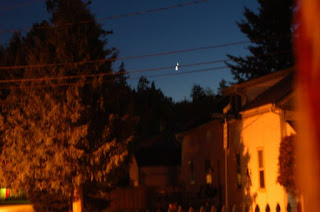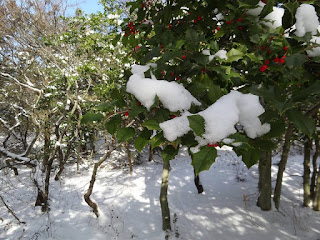Science is very good at explaining things and can even
solve a mystery that has no remaining witnesses. Science is able to tell us how
long ago a frozen cave man lived, and even how he died. One mystery that
science has been unable to explain, but has offered many possible solutions to,
is the Star of Bethlehem that the Magi followed. The star is mentioned in the
gospels, and many biblical events have been confirmed by archaeology. But is
the star a legend, a myth, a miracle, or something perfectly logical?
There are several astronomical phenomena that could
explain the star. People at the time were very astute when it came to sky
watching, as the stars and moon were (and still are) great navigational aids,
so anything out of the ordinary appearing in the sky would have been noticed
and documented. Some examples of astronomical phenomena that could have
occurred on the First Noel include a planetary conjunction, a nova, a supernova,
and a comet.
A planetary conjunction is when two or more planets
appear very close to each other in the night sky, and may even appear to be a
single object. Just such an event- a Jupiter and Saturn conjunction- took place
in the year 7 BC, just outside the accepted date of Jesus’s birth (6 BC- 4 BC).
The timing is very close and the position in the sky is correct, but the
planets were not close enough to appear as a single star and while the
conjunction may have led the Magi in the general direction of Bethlehem from
Jerusalem, but did not stand over Bethlehem as stated in the Bible.
 |
| Conjunction of Venus and Jupiter, 2015 |
A nova (“new star”) is star that suddenly flares up
many times in magnitude. It is given this term because in most cases, it is a
star that ordinarily is not visible to the naked eye. Similar to a nova is a
supernova, a star which has exploded. Chinese and Korean records indicate
either a nova or supernova occurred in the year 5 BC, which also fits the
timeframe for the nativity. Unlike the planets, however, a nova or supernova
would remain in a fixed position in the sky.
 |
| Remnants of 1987 supernova (NASA) |
A comet is best described as a dirty snowball orbiting
the sun. Depending on location and trajectory, they can become visible to the
naked eye as they approach the sun. The period of visibility and brightness
vary from comet to comet, but as an object in orbit, it would certainly move about
the sky. Chinese records indicate a comet appearing in the year 5 BC, which is
within the accepted time of Jesus’s birth. The comet’s location in the sky
would have it preceding the Magi first to Jerusalem, then to Bethlehem. It even
appeared during spring, which is when it is believed he was born, even though
we celebrate Christmas in December. That’s a different story for a different
blog.
 |
| Comet ISON (NASA) |
Over 2000 years later, the great mystery of the Star
of Bethlehem may finally have an answer thanks to forensic astronomy and the
meticulous records of the Chinese. Was it really a comet, a completely rational
cosmic occurrence, which led the Magi to Bethlehem? If so, did divine
intervention place the comet where it needed to be at the right time? That
question might never be answered.
This week's information comes from two sources. Speculation about conjunctions and comets comes from Colin J. Humphreys and the speculation about novae and supernovae comes from Mark Kidger.













